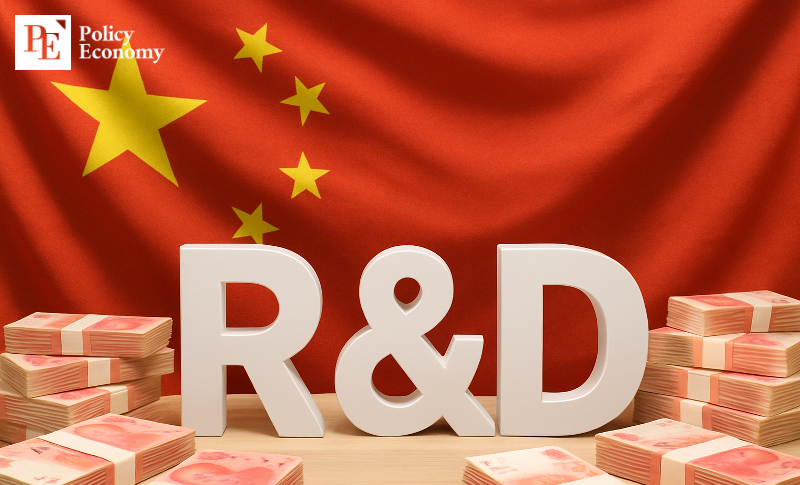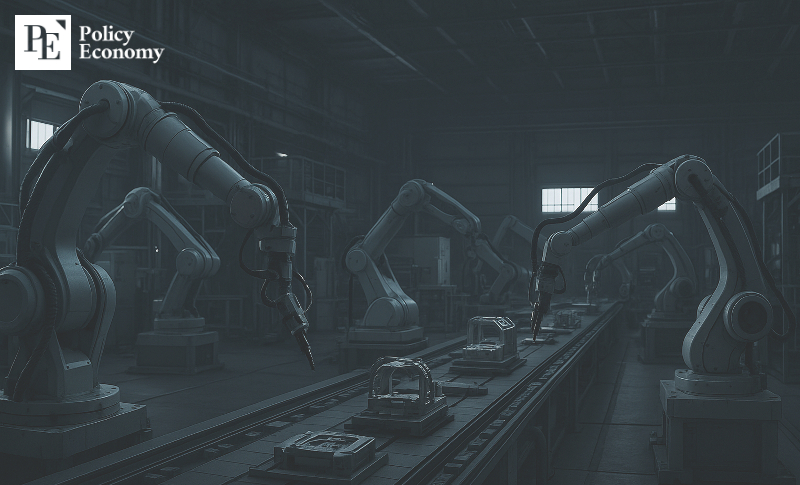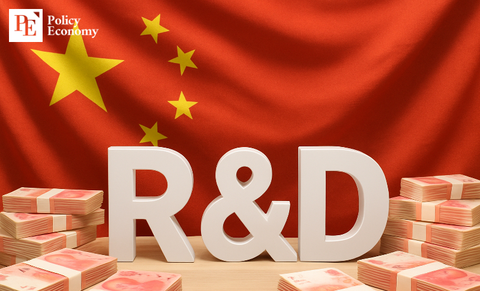China Spends Heavily on R&D, Shifting From Manufacturing to Tech Leadership
Input
Modified
China Poured $715 Billion Into R&D Last Year Chinese Industry Races to Surpass Germany, Japan, and the U.S. in Tech Leadership AI- and Robotics-Driven Manufacturing Spurs Popularity of “Dark Factory” Strategy

China’s research and development (R&D) spending topped 700 trillion won last year, marking a shift from its long-standing manufacturing-led growth strategy. The country is now fully pivoting toward bolstering competitiveness in science and technology.
China Pours Record Funds Into R&D
According to Chinese outlet Dichai Jing on the 30th, citing a joint release from the National Bureau of Statistics, Ministry of Science and Technology, and Ministry of Finance the day before, China’s nationwide R&D spending in 2023 reached 3.63 trillion yuan (about $715 billion), up 8.9% year on year. The figure far surpasses Korea’s entire 2024 government budget of 656 trillion won, ranking China second globally behind the United States. R&D investment accounted for 2.69% of GDP, placing China 12th worldwide.
By region, Guangdong topped the list with 510.9 billion yuan (about $100.6 billion), followed by Jiangsu at 459.8 billion yuan (about $90.5 billion). Jiangsu boasts over 1.2 million researchers and 175 higher education institutions, with manufacturing value-added accounting for 14.1% of China’s total and 4.2% globally. Beijing (327.8 billion yuan), Zhejiang (290.1 billion yuan), and Shandong (259.7 billion yuan) rounded out the top five.
By category, experimental development took the largest share at 2.95 trillion yuan (about $582 billion), followed by applied research at 430.5 billion yuan (about $43.9 billion) and basic research at 250 billion yuan (about $49.3 billion), up 10.7%, 17.6%, and 7.6% respectively from the prior year. By funding entity, corporations accounted for 2.82 trillion yuan (about $556.6 billion), government research institutes 423.1 billion yuan (about $83.5 billion), and universities 306.5 billion yuan (about $60.5 billion), each increasing their R&D budgets by roughly 10% from the previous year.
China Shifts From Manufacturing-Led Growth to Tech-Driven Strategy
China’s heavy investment in R&D reflects a deliberate pivot away from a manufacturing-centered economy toward securing global competitiveness in science and technology. Beijing has set a roadmap to surpass Germany and Japan by 2035, and ultimately overtake the United States by 2049, the centennial of Communist Party rule. The plan’s core focus is not military strength but industrial rise, with corporations driving the development of advanced technologies under strong state backing.
Chinese companies are pursuing “first-mover advantage” in line with this strategy. Huawei, once a latecomer in the 4G era, aggressively moved to dominate 5G standards. It has secured 9,597 standard essential patents (SEPs) critical for 5G implementation, far exceeding Qualcomm’s 8,046. As a result, nearly all companies manufacturing 5G devices are required to pay royalties to Huawei.
In semiconductors, China’s push for industrial ascendancy is also showing results. While Korean giants Samsung Electronics and SK Hynix focused on scaling up existing NAND flash technology, China’s YMTC pioneered a novel “bonding” method. Rather than chasing established players, it introduced an entirely new approach, which industry experts now view as a potential “game changer” capable of reshaping the market.
Battery leader CATL has likewise accelerated its efforts since establishing the 21st Century Research Institute in 2021. It has developed its own AI model dedicated to battery R&D, built a computing center, and explored next-generation materials such as sodium-ion, solid-state, and lithium-metal. These efforts culminated in the successful development of lithium-metal batteries with more than double the energy density and lifespan of existing products. CATL also uses AI to design new cathode and anode materials and identify promising solid electrolytes, positioning artificial intelligence as a central tool in material design, synthesis, and validation.

China’s Factories Go Dark
As China shifts its industrial focus toward R&D, the manufacturing sector is embracing the “dark factory” strategy. A dark factory is a fully automated plant where most tasks once performed by humans—assembly, inspection, logistics—are handled by robotic systems, including multi-joint robots, operating around the clock. With little need for human labor, the factory can function without lighting, hence the name. Artificial intelligence serves as the factory’s “brain,” monitoring processes in real time, making decisions, and autonomously adjusting workflows when unexpected issues arise. Through repeated iterations, advanced machine learning algorithms identify inefficiencies and optimize production.
Xiaomi stands out as a leading adopter. Last year, the company opened a next-generation smartphone plant in Changping, Beijing, with an investment of about $370 million and an annual capacity of 10 million units. At the facility, intelligent robots handle nearly all tasks 24/7, producing one finished smartphone per second. Using its in-house smart control system, Xiaomi has automated everything from printed circuit board (PCB) assembly to component inspection and final testing.
Other Chinese companies are also rolling out automation at scale. BYD’s Xi’an plant, for example, uses robotic handling systems and automated guided vehicles (AGVs) to automate 97% of processes such as welding, painting, and battery pack assembly. Huawei likewise showcased its vision of intelligent manufacturing at Germany’s Hannover Messe in April, presenting technologies powered by AI, cloud computing, and next-generation wireless. The company emphasized the “enormous potential” of smart factories in reshaping global industry.






















Comment